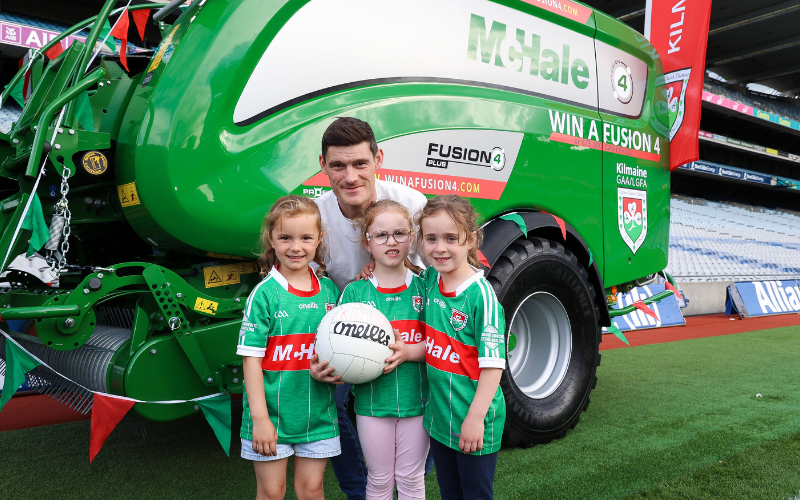Everybody could see, even before she was 10 years old, that Sheila was far and away the most beautiful girl child in the parish, maybe even in the whole county. Strangers seeing her for the first time often smiled and stopped in their tracks.
Everybody could admire the blue-black sheen of her lustrous black curls, the amazing green eyes, the quick, shy smile, the cheek dimples, the enchanting way in which her shapely head was set atop her lissom body. Angelic is what they often said.
Everybody in the parish also knew that Sheila would never be cast as the Virgin Mother in her primary school's annual Nativity play. That is the school's big day of the year. The kids would be in final rehearsals for the event from the beginning of December.
It is the day the priest and the parents come to the classrooms for the celebration. It is still a major social occasion. Back when Sheila was 10 years old it was infinitely more major still.
The prettiest girl in the class always plays the role of the Blessed Virgin, and the biggest boy is Saint Joseph. There are others cast as shepherds and the Magi and the rest of the pupils, except the low infants, form the Christmas choir around the crib.
Everybody knew, even when Sheila was 10 or 11, that she had a silver bell of a singing voice. Everybody also knew she would never play the role of the Virgin Mary. This is a small two-teacher school in a remote, rural area. It is a Catholic school. Almost all of the parents are farmers or farm laborers. There are just five or six tradesmen such as carpenters, plumbers and electricians.
This is a traditional western community, closely knit and bonded back then in Sheila's childhood and today. These are God-fearing, good people, mutually warm and compassionate and supportive. Their mores would have changed very little over the past century and longer.
One could scarcely meet a kinder lot than those who always knew that Sheila would never play the role of the Virgin Mother. The community has always heavily supported their school. It is the way it has always been.
The farmers take it in turns to supply timber and turf, free of charge, for the two black stoves that warm the building. The tradesmen equally, free of charge, carry out any necessary repairs or renovations.
There is a parish bazaar every winter to raise funds directly for the school. It is always magnificently supported by those who always knew that Sheila would never play the role of the Blessed Mother in the annual Nativity play. Of all the supportive farmers in the parish, the Kinahans own the biggest farm. They have 18 milk cows always and close to 80 acres of good land for tillage. Decent, hardworking people.
The men and boys of the clan are big and awkward and rawboned. The girls are the female equivalent and, frankly, wear homely faces.
The Kinahans have always had big Catholic families for the desks in the classrooms. In Sheila's primary school years there were two Kinahan girls and several low infants. All of them were quietly well-behaved. Not one of them, in singing terms, had a note in their head.
Kinahans work hard and don't sing. And the men don't drink. They are all Pioneers.
The solid backbone of the parish. The salt of the earth. Sheila was born out of wedlock at a time when illegitimacy in Ireland was heavily stigmatized and scandalous. Her birth was the talk of the parish for at least six months.
Her mother was the quiet daughter of a farm laborer. Nobody but her knows who the father was. One story is that he worked in a circus that passed through the parish that summer.
It was amazing that Sheila's mother kept her daughter at the time. That took great courage. It took family courage and support as well. Back then pregnant girls usually fled to England and never came home again. Or else they went quietly "into service" to remote convents and gave over their newborns for adoption.
Many pregnant girls of the time were driven out of their homes by their own scandalized families. Everybody knew that was the way it was. Everybody knew before they went to the school for the Nativity play the Christmas that Sheila was 10 years old that one of the Kinahan daughters would play the coveted role of the Blessed Mother.
The principal teacher, Miss Nugent, selected Mary Kinahan, the eldest of them. Mary was never going to be beautiful or even pretty. She was so shy she kept her head lowered over the doll she held as the Child for the entire show.
Noel Keane played St. Joseph because he was the tallest of the boys and had a good, strong singing voice. Mary seemed to move her lips to the words of the carols but made no sound.
Farmers' sons played the parts of the shepherds and the kings. They sang lustily and well, and one silvery voice embellished the entire singing during the evening. If you looked very carefully and closely you could see that it came from one of the children playing the parts of the villagers that came to the Crib. They were clustered around the back, wearing sacks as cloaks. Their faces were browned with make up and their heads were veiled.
It was very difficult to spot Sheila on the very edge of the crowd at the very back. The clue was the soaring silvery, angelic voice. Everybody there knew who owned that voice.




Comments